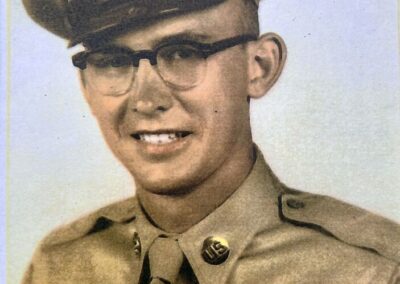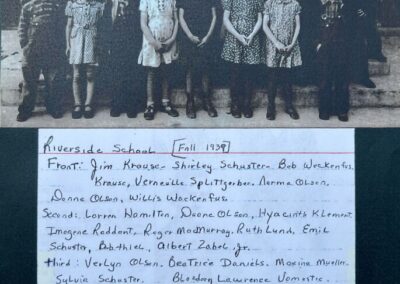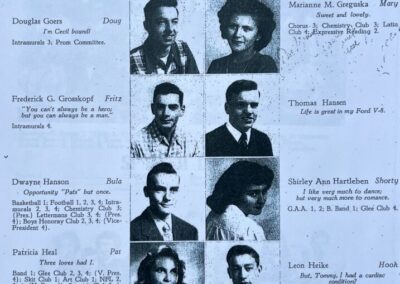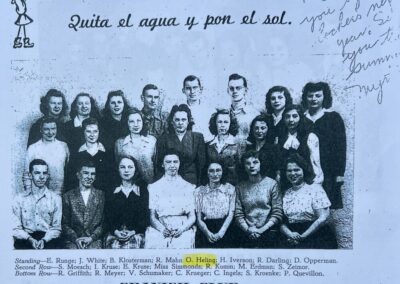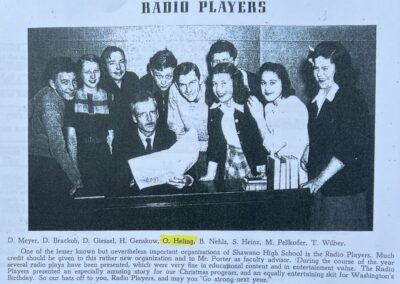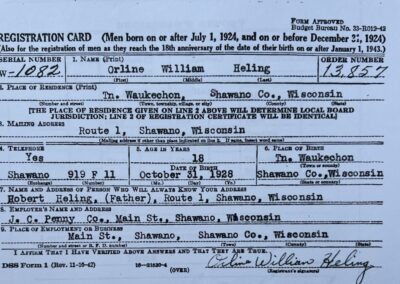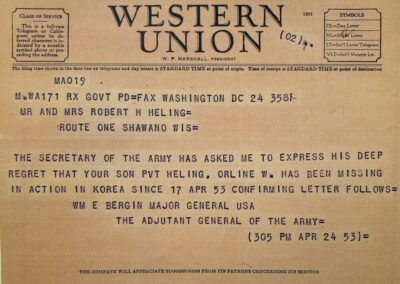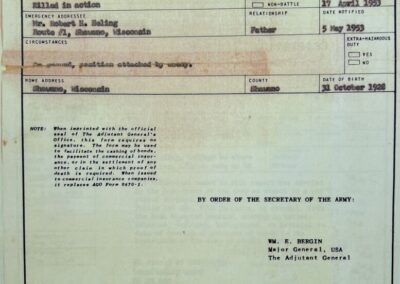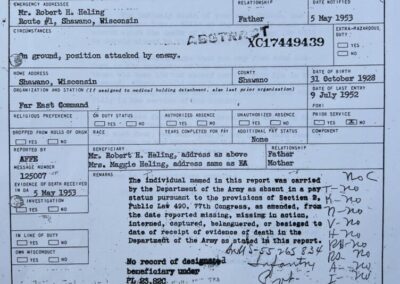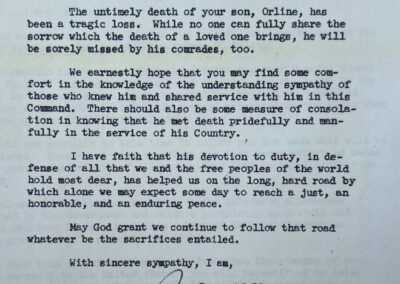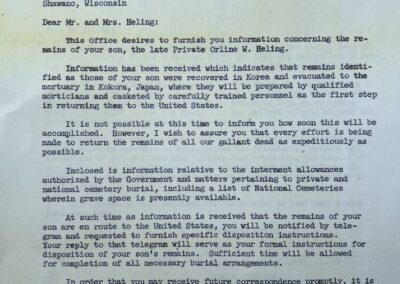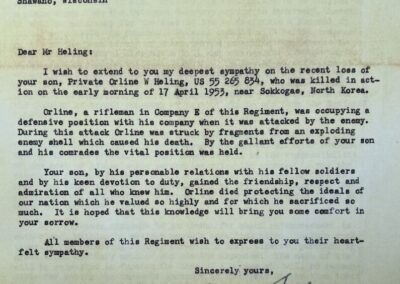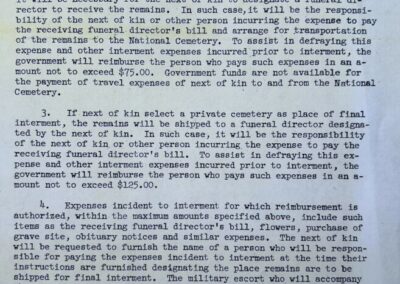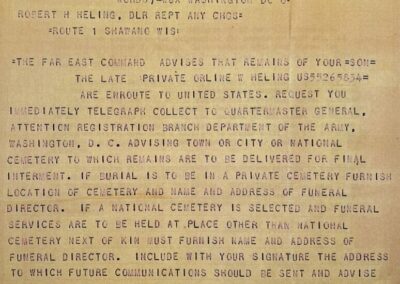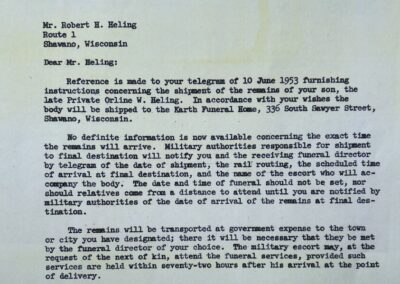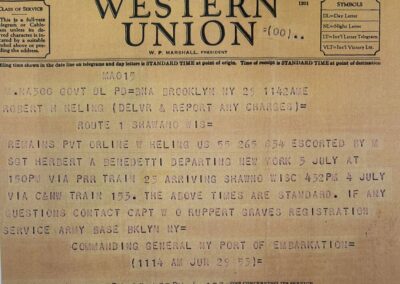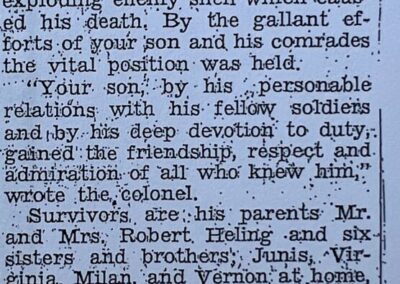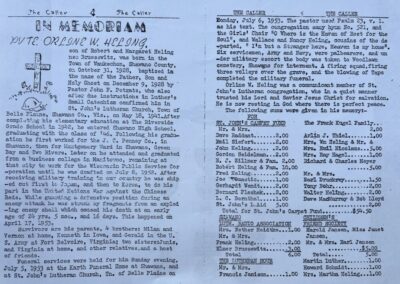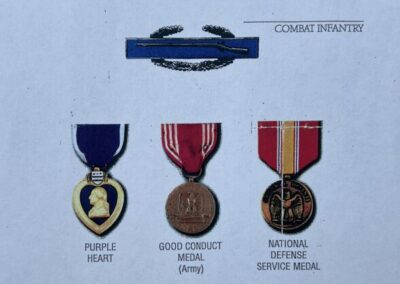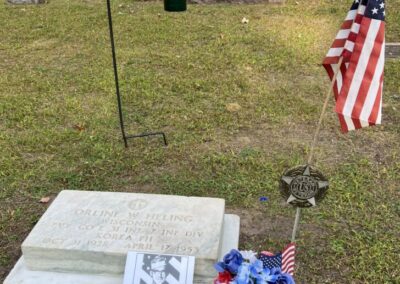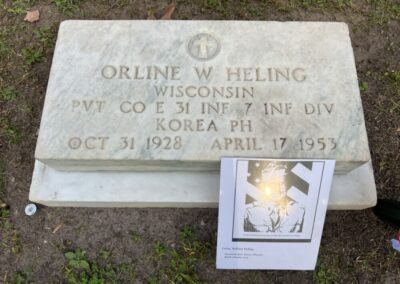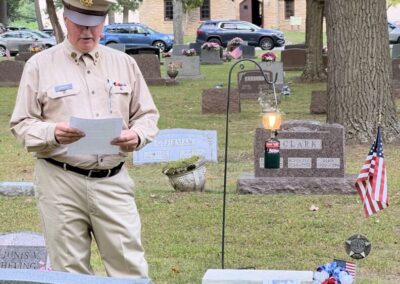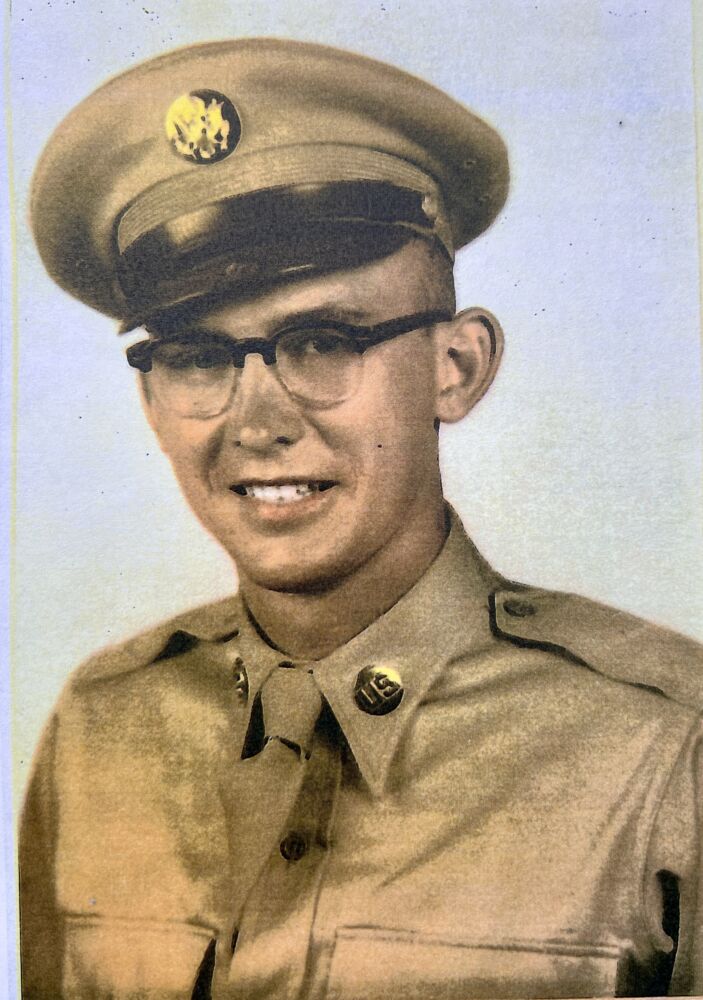
Photo Gallery
Private E-2 – Orline W. Heling
Born oct 31, 1928 on a dairy farm in the Town of Waukechon, Orlie, as he was called, was one of seven children born to Robert and Maggie (nee Brusewitz) Heling. Pastor John F. Potratz baptized Orlie on December 9, 1928. He was confirmed on May 18, 1941 at St. John’s Lutheran Church in the Town of Belle Plaine.
Orlie attended Riverside Country school for grades 1 through 8 during the years of 1934-1942. He graduated from Shawano High School in 1946. In high school he didn’t play on any of the school’s sports teams but, concentrated on academics. He was a member of the Spanish, Radio, and Chemistry Clubs. He was well liked and had many friends.
Following high school, he worked for the J.C. Penny Company in Shawano and then, Montgomery Ward in Shawano, Green Bay, and Two Rivers. He attended and graduated from the Manitowoc Business College and worked for Wisconsin Public Service Corporation in Manitowoc. Orlie had a girlfriend from Two Rivers and a promising future ahead. Then on July 8, 1952, at the age of 23, Orlie was drafted into the Army. His service number was US55265834.
In Korea, the war was two years old. In the first year both sides gained and lost territory. Seoul, the South Korean Capital changed hands several times. In the second year and third year to come, the war would be known as the “Hill Battles” or stalemate.”
The fighting would be along the 38th parallel which was a series of hills and valleys. The peace talks began in July 1951. The fighting would mainly be mortar duels, artillery barrages, patrols, ambushes, and skirmishes. As each side would attempt to strengthen their positions along the 38th parallel. These hills would be given names that would become familiar with the American public like; Punch Bowl, Fools Mountain, Bloody Ridge, Heartbreak Ridge, Iron Triangle, Sniper Ridge, Suicide Hill, T-bone Hill, Old Baldy, and Pork Chop Hill where PVT Heling’s life would end on April 17, 1953.
Orlie completed 14 weeks of basic combat and infantry training at Fort Riley, Kansas. After a short leave at home, he arrived in Korea on December 1952. He was assigned to Company E, 2nd Battalion, 31st Infantry Regiment, 7th Infantry Division. For the five months Orlie was in Korea, he was located on the 38th parallel near Pork Chop Hill and was involved in daily contact with the enemy.
On the evening of April 16, 1953, Orlie’s company of 70 men along with several other companies were occupying the trenches and bunkers on Pork Chop Hill. Just before midnight, the Chinese unleashed an artillery barrage followed by an infantry assault by the 201st Regiment of the “Peoples Volunteer Army (Chinese).” The hill was quickly overrun but then retaken by American reinforcements. 104 Americans died, 373 were wounded and Chinese losses were unknown. There were only 7 survivors from Orlie’s 70-man company. This became known as the “First Battle of Pork Chop Hill.” 101 days later, on July 27, 1953, the armistice was signed and all fighting ended.
Orlie’s parents received a Western Union telegram on April 24, 1953 stating that Orlie had been missing in action since April 17, 1953. They received a second telegram on May 5, 1953 stating Orlie had been killed in action on April 17, 1953.
On May 9, 1953 a condolence letter from General Mark Clark was received. On May 11, 1953, a letter was received stating that Orlie’s remains had arrived in Japan for processing. On May 15, 1953 a condolence letter was received from the commander of the 31st Infantry Regiment.
On June 9, 1953, a telegram was received stating that Orlie’s remains were enroute from Japan to the United States. A letter was also received stating that the government would reimburse up to $125 toward the funeral director’s bills, flowers, purchase of a grave site, obituary notices, and similar expenses. A government headstone would be furnished but the “next of kin” is responsible for the cost of receiving it at the train station and having it placed at the grave.
On June 12, 1953, a letter was received confirming that Orlie’s remains will be shipped to Shawano. On June 29, 1953, a telegram was received from Captain Ruppert of the Army graves registration service in Brooklyn, NY stating that Orllie’s remains would arrive at 4:32am on July 4, 1953 via the Chicago & Northwestern train #153. SGT Herbert Benedetti would be escorting the remains. (This was Saturday afternoon arrival on the 4th of July).
A wake was held on Sunday evening July 5, 1953 at the Karth Funeral Home. The next day, Monday July 6, 1953 the funeral was held at St. John’s Lutheran Church in the Town of Belle Plaine with Reverand L. C. Bernthal officiating. Burial was in Woodlawn Cemetery in Shawano.
On July 7, 1953, the Veterans Service Officer, Gerald Riley, ordered the marble grave stone. Within a few months it arrived at the train station from Green Mountain, Vermont.
Also on July 7, a letter was received from the Veterans Administration stating that Orlie had a serviceman’s life insurance policy in the amount of $5,000. This insurance will be paid to Orlie’s parents in 120 monthly payments of $46.45, commencing on April 17, 1953 with the final payment on March 17, 1963.
PVT E-2 Orline W. Heling was 24 years, 5 months, and 16 days old when killed on April 17, 1953. He had been in the army nine months and in Korea for five months. Today, “Pork Chop Hill” is located on the North Korean side of the 38th parallel and the “West” has no access to it.

